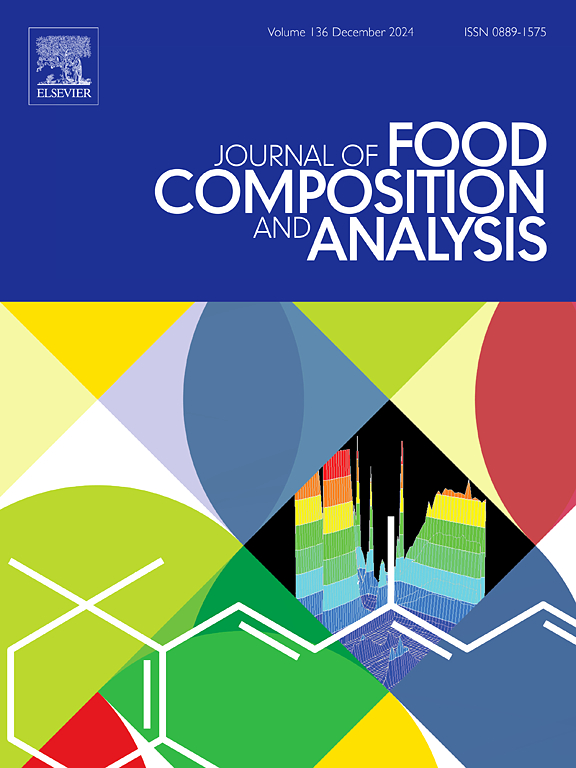Simultaneous quantification of light elements in food based on portable energy dispersive X-ray fluorescence (p-XRF) combined with second-order calibration algorithm
IF 4
2区 农林科学
Q2 CHEMISTRY, APPLIED
引用次数: 0
Abstract
In order to accurately quantify the content of light elements in food samples, a method based on portable energy dispersive X-ray fluorescence (p-XRF) technology combined with second-order calibration algorithm was proposed to simultaneously quantify phosphorus (P), sulfur (S), potassium (K) and calcium (Ca) in different food samples. Firstly, the XRF response signal matrix of each food sample was obtained by changing the test current and voltage. Secondly, the alternating penalty trilinear decomposition (APTLD) algorithm was used to analyze the three-way data array stacked by multiple samples. The results showed that second-order calibration algorithm could accurately extract the spectral signal of the target element even if there were serious background interference and signal overlap. The predicted recovery rates of the target elements in the food samples are 82 %–119 %. The LOD and LOQ of P, S, K, and Ca are 3, 3, 20, 8 ppm and 9, 11, 68, 26 ppm, which proves that this method can accurately quantify light elements in food samples. This study demonstrated that p-XRF combined with second-order calibration is an effective method for the determination of light elements in food and has broad practical application prospects.
求助全文
约1分钟内获得全文
求助全文
来源期刊

Journal of Food Composition and Analysis
工程技术-食品科技
CiteScore
6.20
自引率
11.60%
发文量
601
审稿时长
53 days
期刊介绍:
The Journal of Food Composition and Analysis publishes manuscripts on scientific aspects of data on the chemical composition of human foods, with particular emphasis on actual data on composition of foods; analytical methods; studies on the manipulation, storage, distribution and use of food composition data; and studies on the statistics, use and distribution of such data and data systems. The Journal''s basis is nutrient composition, with increasing emphasis on bioactive non-nutrient and anti-nutrient components. Papers must provide sufficient description of the food samples, analytical methods, quality control procedures and statistical treatments of the data to permit the end users of the food composition data to evaluate the appropriateness of such data in their projects.
The Journal does not publish papers on: microbiological compounds; sensory quality; aromatics/volatiles in food and wine; essential oils; organoleptic characteristics of food; physical properties; or clinical papers and pharmacology-related papers.
 求助内容:
求助内容: 应助结果提醒方式:
应助结果提醒方式:


